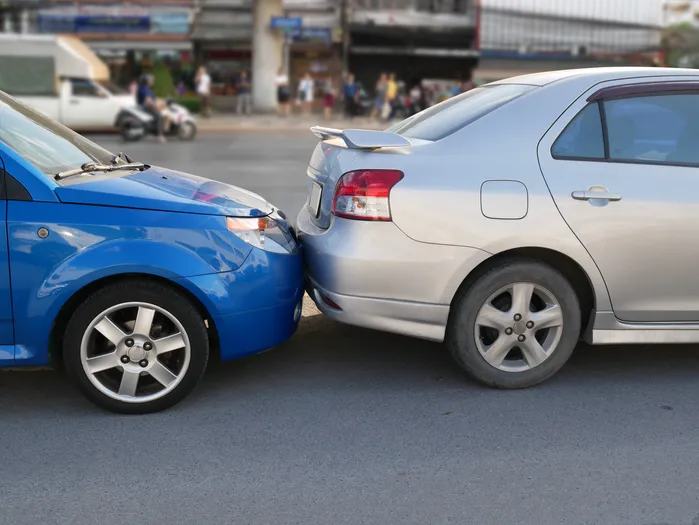6 min read time
Table of Contents

What Is Pain and Suffering?
In personal injury cases, pain and suffering refers to the physical and emotional distress someone endures because of a physical injury, accident, or other traumatic event.
When filing a personal injury lawsuit, pain and suffering will be categorized as non-economic losses, which means that they are not easily measured by a monetary amount, such as how medical bills or lost wages are.
Correctly calculating pain and suffering in a personal injury case can be a complex ordeal that typically requires assistance from an experienced team of pain and suffering lawyers.
5 Examples of Pain and Suffering Settlements
Understanding what your pain and suffering settlement amounts to may require you to analyze a couple of examples, which is why below we provide 5 that may relate to your personal injury case.
Neck Injury Resulting from a Car Accident
A common auto accident injury, whiplash may result in chronic neck pain for months. This pain may cause a victim physical discomfort, resulting in limited mobility.
For the pain and discomfort they experience due to having limited mobility, their settlement offer may include compensation for the pain and emotional suffering the months of discomfort the whiplash caused to their life.
Slip and Fall in a Store
In a slip and fall accident in a grocery store, a victim suffers a severe back injury that causes constant pain and restricted movement in the lower half.
Due to the back injury, the victim is unable to participate in their bi-weekly baseball league, which results in depression.
For the emotional distress they suffered because of the injury, they can seek pain and suffering damages in their slip and fall case.
Emotional Damage After Medical Malpractice
A patient is misdiagnosed by a doctor and undergoes surgery as a result of it. Following the surgery, the misdiagnosis is discovered, and the patient files a pain and suffering claim against the hospital for the psychological and physical impact the surgery caused.
Dog Bite Causing Emotional Trauma
A child is bitten by a dog, which causes permanent scarring on the face and lasting anxiety in the child when they are around animals.
Due to this emotional trauma, the child experiences nightmares, fear of dogs, and a loss of confidence in social settings, which makes them eligible to seek pain and suffering compensation.
Wrongful Death of a Family Member
Following a wrongful death, the surviving members of the family can seek compensation through a pain and suffering claim for the emotional damage losing a loved one has caused in the family.
The amount of supposed grief and mental anguish will determine the pain and suffering award amount.
How to Negotiate Pain & Suffering Settlement

Obtaining a larger settlement for pain and suffering is a difficult task, as pain and suffering damages are subjective and harder to quantify, which means you must know how to negotiate properly when seeking a higher settlement offer.
Document the Effects of Your Injuries
In car accident cases, medical malpractice cases, or any other personal injury claims, a large role in obtaining more compensation for pain and suffering is keeping a detailed record of your daily physical pain, emotional trauma, and how the injury has affected your daily life.
Along with personal documentation, it is recommended that you also collect medical records, therapy notes, and any prescriptions that relate to your pain and suffering.
Understand How to Calculate Pain and Suffering Damages
Insurance companies typically use the multiplier method to calculate pain and suffering, as Nevada law does not outline a specific method.
By understanding the method, you can more easily negotiate for a higher settlement amount.
The multiplier method can typically be done by:
- Adding up all the economic damages, such as medical bills and lost wages, in your claim.
- Multiplying the total amount of economic damage by a range of 1.5 to 5, depending on the severity of your non-economic damage (pain and suffering).
By using this method, you can provide yourself with a realistic estimate of your economic and non-economic damages.
Make a Demand Letter
Make a demand letter for the insurance company using the sought-after settlement amount you got by performing the multiplier method and the documentation and notes you have taken.
This demand letter should outline how your injuries have affected your day to day life by going over how the emotional damage and pain has caused a loss of enjoyment in activities and life.
To end the demand letter, include the settlement amount you wish to receive.
Contact a Personal Injury Attorney
Negotiating with the insurance company can be a difficult and time-consuming process, as they may delay your demand letter or reject giving you more money.
It is highly recommended that you enlist the help of a qualified attorney, as doing so greatly increases your chances in negotiations.
If you are planning to negotiate for a higher settlement and seek an experienced legal team to support you, contact the personal injury attorneys at The Rodney Okano Car Accident Lawyer Law Firm by calling (702) 566-3600 for a free consultation.
Average Pain and Suffering Settlement for Car Accident
While a pain and suffering settlement depends on numerous factors, the average payout is around $15,000 to $50,000; however, in large accident cases or malpractice suits, an average settlement can easily exceed $100,000.
What Factors Affect a Pain and Suffering Settlement
From policy limits, medical costs, and whether catastrophic injuries were involved, various factors can affect a pain and suffering settlement; some of the most common are:
- Severity of Injuries: More severe injuries, such as head injuries or broken bones, tend to increase the value of the pain and suffering component of a case as they result in more emotional and physical pain and require more recovery time, physical therapy, and daily attention.
- Duration of Recovery: If the physical injuries you sustained in an accident lead to chronic pain or long-term rehabilitation, the settlement amount will typically be higher.
- Amount of Mental Trauma: The amount and severity of emotional damage you suffer, such as anxiety, depression, or PTSD, can significantly increase the value of a pain and suffering case.
To learn the worth of your pain and suffering claim, contact one of our personal injury lawyers today by calling (702) 566-3600 for a free case evaluation.
How Can You Explain Pain and Suffering in a Lawsuit?
Explaining the physical and mental pain you suffered because of an accident must be done correctly if you seek to prove pain and suffering and obtain a fair settlement amount.
Describe the Physical Suffering
In your lawsuit, describe the pain the injury has caused, the largest pain source, and how it has affected your daily life and participation in activities.
Ensure that you use descriptive language to convey the intensity and duration of your pain; in addition, provide examples of the daily activities that have become difficult or impossible due to the injury and amount of discomfort, chronic pain, and limited mobility you suffer from.
Cover the Emotional Pain
Emotional pain is one of the most significant parts of non-economic damages, so it's crucial that you explain how your injuries have affected your emotional well-being.
To explain emotional damage in your lawsuit, describe how feelings of anxiety or depression have affected your ability to live a normal life.
An example is that if you were in a car accident with a drunk driver, you might explain how feelings of anxiety have made it harder to impossible for you to drive at night.
Provide Medical Documentation
Testimony from you may not be enough, and at times, the insurance company or jury requires you to provide medical documentation that supports your non-economic damages.
Key medical records you should provide to prove non-economic damages are doctor's notes, therapy reports, and prescriptions for pain medication or psychological treatment.
In addition, provide a list of the expenses incurred because of the injury in your lawsuit, as it may help prove the extent and length of your non-economic damages.
Talk About the Long-Term Impact
It's crucial that you cover the future pain and suffering that could potentially arise from the injuries.
This could include talking about permanent disabilities, ongoing medical treatment, and how the injuries will affect your future quality of life in your lawsuit.
Do NOT Over Exaggerate
While you should use descriptive words when explaining the extent and severity of your pain and suffering, it's crucial that you don't exaggerate your pain.
Over-exaggerating your pain and suffering may result in the defense trying to discredit your claims, which could hurt your payout for non-economic damages.
In your lawsuit, stick to facts, descriptions of your pain and suffering, and medical documentation that backs your claims.
Obtain the Compensation You're Entitled To
Contact Us Today
Rodney Okano Car Accident Lawyer is a Las Vegas personal injury law firm with over 20 years of experience helping clients obtain maximum compensation following injuries from accidents such as car crashes, worksite injuries, and slips and falls. Over those years, The Rodney Okano Car Accident Lawyer Law Firm has become an experienced law firm that can ensure exceptional results for any of its clients.





